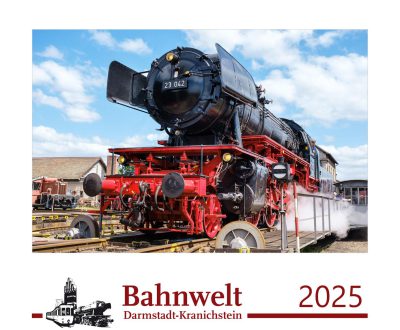Diesel locomotives were of interest to the Wehrmacht at a very early stage, as they did not indicate their locations by plumes of smoke. Accordingly, the WR 360 C 14 locomotives were created in the late 1930s as switching locomotives for the army. The war locomotives were used throughout Europe and also in North Africa during the Second World War. The original series was repeatedly further developed, especially with regard to the engine and power transmission. After the war, both the Bundesbahn and the Reichsbahn re-designated diesel locomotives of this type as the V 36 series. More machines were procured from the Bundesbahn in 1950. But it was also used in many European countries, e.g. in Austria by ÖBB as type 2065, in Italy by FS as D 236, in Czechoslovakia by ČSD as T 334.0 and in France by SNCF as Y 50100.
V 36 401
This machine was accepted by the Bundesbahn in Nuremberg in 1950 and put into service in Frankfurt as the V36 401. It changed locations several times during its service life: Frankfurt-Griesheim, Hanau, Wiesbaden, Gießen. In 1968 it was given the code 236 401-6. In 1976 it returned to Frankfurt and was retired there in 1978.
V 36 411
This locomotive was also accepted by the Bundesbahn in Nuremberg in 1950 and put into service in Frankfurt as V36 411. During its time in service it also changed its place of operation: Frankfurt-Griesheim, Hanau, Gießen. In 1968 it was given the code 236 411-5. In 1979 it was taken out of service in Frankfurt and came to our museum in 1982.
MANUFACTURER
YEAR OF CONSTRUCTION
WITHDRAWAL FROM SERVICE
MAX. SPEED
Sundays / public holidays 10 – 16 h
From April to end of october also on
Wednesdays 10 – 16 h
© Bahnwelt 2025. All rights reserved.
Am 29.05., 31.05. und 01.06. erwartet Sie wieder ein umfangreiches Programm rund um die Eisenbahn für Groß und Klein mit Pendelfahrten, Vorführungen, Ausstellungen und weiteren Attraktionen!
Hinweis: Aufgrund der Vorbereitungsmaßnahmen bleibt das Eisenbahnmuseum am Mittwoch, den 28.05.2025, geschlossen.

Nach dem Erfolg der Erstauflage für das aktuelle Jahr ist auch für 2025 ein Kalender mit zwölf einzigartigen und handverlesenen Aufnahmen historischer Eisenbahnfahrzeuge in authentischer Kulisse des Eisenbahnmuseums entstanden.
Der Kalender ist ab sofort online oder im Museumsshop erhältlich!
For better reading, the masculine form is used for personal names and personal nouns on this website. Corresponding terms apply in principle to all genders for the purpose of equal treatment. The abbreviated form of language is for editorial reasons only and does not imply any valuation.
Sie erhalten in Kürze eine E-Mail an die von Ihnen angegebene E-Mail-Adresse. Bitte bestätigen Sie Ihre Newsletteranmeldung über den darin enthaltenen Link.